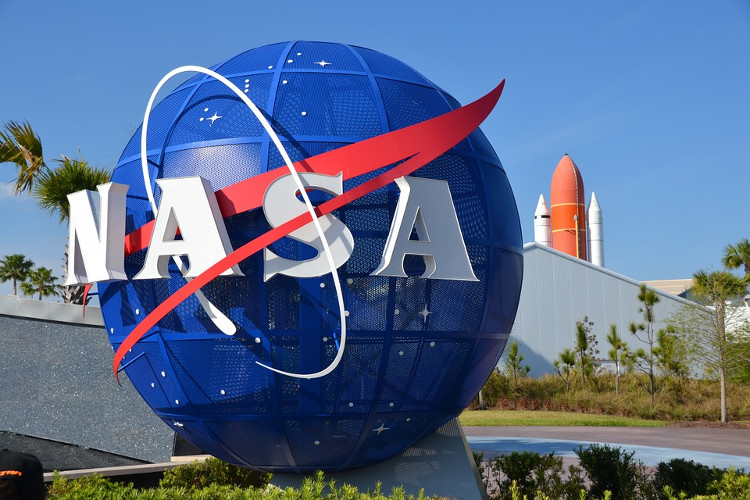Things you didn't know about NASA
The US Aeronautics and Space Agency or the US Aeronautics and Space Agency, the full English name is the National Aeronautics and Space Administration (NASA).
What is NASA?
NASA or the US Space Agency is the US federal government agency responsible for implementing space exploration and aviation research.
President Dwight D. Eisenhower founded NASA in 1958 with the aim of civilizing towards peaceful applications in space science. The National Aeronautics and Aeronautics Act was passed on July 29, 1958, which disbanded NASA's predecessor, the National Advisory Committee for Aeronautics (NACA). The new agency officially operated on October 1, 1958.

NASA is also known as the US Space Agency.
Since then, most space exploration missions have been undertaken by NASA, including Apollo's moon landing mission, the Skylab space station, and the space shuttle program. Currently, NASA is participating in the construction and operation of the ISS International Space Station and is monitoring the development of the Orion spacecraft, the SLS Space Launching System and the spacecraft launches with the participation of joint stock company. The agency is also responsible for the Launch Services Program (LSP) Program to implement monitoring and management of NASA unmanned spacecraft launch operations.
NASA's goal
NASA's scientific objectives focus on understanding the Earth through the Earth's Observing System, physical research of the Sun, exploring celestial bodies in the solar system with advanced robotic spacecraft such as New Horizons and research topics of astrophysics, such as Big Bang, through the development of large research devices in space and other affiliate programs.
NASA shares information with many national and international institutes and organizations, such as the GOSAT Greenhouse Gas Observatory Program.

NASA headquarters.
NASA achievements
NASA and the greatest scientific achievements in history.
1. Chandra X-ray telescope
The Chandra telescope was launched into the second half of 1999 and is an important device in NASA's space conquest. During fifteen years of operation, Chandra has provided mankind with a unique panoramic view of the universe. This is considered one of the greatest scientific achievements in NASA's history.
2. Freedom 7 and the mission of bringing the first Americans into space
On 5 May 1961, Alan Shepard left Earth and officially became the first American astronaut to fly into space. It should be noted that Shepard was not the first person to fly into space - the great achievement of the great Soviet astronaut Yuri Gagarin.
3. ISS International Space Station
The International Space Station ISS was built in 1998 and put into use by researchers since 2000. The first crew arrived in the station in 2000 and since then they have lived in the place. Here, serving for research and space exploration.
NASA and its partners from all over the world formally completed the construction of the International Space Station in 2011. Astronomers had to study to find ways to live in a zero gravity environment, and beyond that is to accomplish the future task of bringing people to the Moon and Mars.
4. Apollo 13
On April 11, 1970, the Apollo 13 spacecraft was launched, and after 55 hours and 55 minutes, a devastating explosion occurred, destroying almost the entire system as well as the equipment needed to maintain. life on board.
The horrifying incident began because one of the ship's engines stopped operating within two minutes of takeoff. One of the two oxygen tanks exploded and the pressure of the explosion caused the second oxygen tank to continue to break. Soon after, two of the spacecraft's three fuel chambers stopped working. This means that all of Apollo 13's oxygen storage has leaked into space and all basic life support such as electricity, water, light, temperature and oxygen ends.
This disaster marked one of the best collective rescue phases in human history. People had thought about the tragic possibilities that could happen but in the end the miracle came, the survival of crews James Lovell, Fred Hayes and John Swirget were considered a miracle.
5. Apollo 11
Apollo 11 shuttle became the first mission to successfully bring people to the Moon. When Neil Armstrong astronauts set foot on the surface of the Moon and uttered the legendary saying "A small footstep of man, a giant leap for humanity", the whole world was amazed, even some people are skeptical and do not believe in miracles.
Soon after, Buzz Aldrin and two others became the next to set foot on the Moon. Since Apollo 11's mission has been successful, only ten astronauts have ever set foot on the Earth's only natural satellite.
- NASA movie screening confirms no
- 7 things you are believing in every day turn out to be fictional
- Bad things always remember longer than good
- If you're an astronomer, don't ignore these 5 NASA sites
- At NASA there is a position that only needs to graduate from high school, but it is very important
- 12 horrible things about China you may not know
- 10 interesting things about life you may not know
- 9 things are more important than money
- NASA announced the image of the ice floated square, never seen before
- 10 interesting things about nature you may not know
- NASA robots detect precious clues about life on Mars
- NASA works again
 'Fine laughs' - Scary and painful torture in ancient times
'Fine laughs' - Scary and painful torture in ancient times The sequence of numbers 142857 of the Egyptian pyramids is known as the strangest number in the world - Why?
The sequence of numbers 142857 of the Egyptian pyramids is known as the strangest number in the world - Why? History of the iron
History of the iron What is alum?
What is alum?